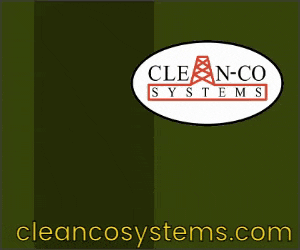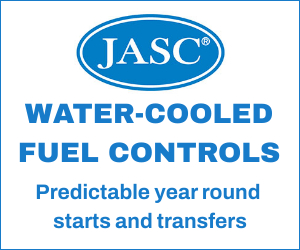Once upon a time, a vertically integrated utility was responsible for electricity supply—soup to nuts, that is, from the powerplant to the customer’s meter. Today, responsibility for over half of US power production rests with non-utility entities. Like most big industry shifts, this transition has led to greater efficiencies in some areas, challenges in others.
For operating entities, some of those challenges are created by having multiple organizations responsible for different aspects of the equipment during different phases of the facility’s life. Gaps in scope and duties have to be identified and addressed before they cause heartache. Chances are, you’re going to learn this stuff only if you visit the facilities and talk to the people who know the facts on the ground because they are the boots on the ground.
CCJ ONsite has been chronicling progress at the 725-MW Woodbridge Energy Center, Woodbridge, NJ, owned by CPV Shore Investment, LP, Osaka Gas USA Corporation, Toyota Tsusho Shore, LLC, and John Hancock Life Insurance Corp, and operated by Consolidated Asset Management Services (CAMS). The 2 × 1 combined cycle, constructed on an EPC basis by Kiewit Corp, is anchored by two of the first 7FA.05 gas turbines to achieve commercial status.
In November 2017, CCJ editors stopped in to visit with Ken Earl, plant manager, and Michael Armstrong, plant engineer, to get the latest rundown on this pioneering facility. Addressing the gaps among different responsible parties proved to be a theme that emerged following the discussion.
GT models, oversight. First and foremost, the Dot 05 engines are meeting all of their performance parameters. “No issues yet,” reports Earl, “although there is plenty of margin in the performance guarantees.”
One of the features of the GTs is model-based controls, which automatically adjust the machines’ (and therefore the plant’s) operation based on real-time variations in input parameters (inlet air temperature, for example) and output requirements (such as load signals from AGC). “The units are constantly making internal adjustments, which enhances flexibility.”
However, because the calculations are performed inside the model, it is difficult for the plant operators to “see” what parameters are controlling performance and to diagnose issues, which forces them to rely on the OEM. GE considers the model proprietary, along with the Dot 05 hardware technology.
The gap here is that GE has its views inside the GT model, but not the overall plant; operators have the plant views but not the GT. Earl considers this a temporary issue, as they create their own models based on comprehensive operating data. “The machines are thinking on their feet,” Earl observed, “we just have to catch up; we need to know if we are getting everything we can out of the units at any particular operating condition.”
As automation and model-based control proliferates, owner/operators should be cognizant of this gap in writing contracts and outlining scope boundaries. After all, the vendor may own the models, but the plant owns its data and is responsible for facility performance.
BOP challenges. Earl further indicates that the balance-of-plant (BOP) performance “is where we want to be,” specifically enumerated as 92% equivalent availability with a forced-outage rate of less than 2%.
Despite the attention Earl and company paid to heat tracing, it still came to bite the plant staff in the behind. In 2016, during early ops, CAMS had to work diligently to make sure the heat tracing systems were complete and adequate. However, a heater did fail inside an enclosure (a level transmitter) and shut down the plant. Critically, Woodbridge is designed as a completely outdoor facility in a region that can experience some brutal winter weather.
Here, the gap is between the heat tracing system designer and the heat trace system installer. As a means to further ensure heat trace effectiveness, CAMS, along with CPV, contracted with Thermon Manufacturing Co to audit the equipment, turn everything on, inspect each individual circuit, make sure the electrical wiring was configured correctly in the panels, measure current draws, and properly set the alarms. Many installation errors were discovered, especially in programming.
This isn’t your father’s electrical heat trace system either. There are 17 heat trace control panels throughout the plant, with dozens of individual circuits tied into each one. The circuits include high/low current alarms and information that helps anticipate failures. False alarms in mild weather were common and had to be addressed, since the alarms are directed to the control room and operators have to go to the local panel to address them.
Even with the audit and rework and $150,000 additional expenditure, Earl indicates the heat tracing is the type of system that “demands constant attention.”
The blowdown system improvements, are working well. Essentially, the logic in an over-complicated control loop had to be modified to reduce the amount of quench water (purchased from the local municipal water authority) used to cool the blowdown. Apparently, the logic was set to protect the blowdown-tank-sump outlet piping from possible high-temperature excursions while also controlling the blowdown-tank outlet to this low temperature.
However, the tank can handle temperatures far higher than the logic would allow thus wasting water by over-quenching. The outcome is that the plant has reduced purchased water consumption by 125 gpm by addressing a gap between the designer’s need to over-protect and the owner/operator’s need to reduce needless expenses.
What the plant cannot control is the quality of the water delivered to the cooling tower, effluent from the county wastewater treatment facility. “We still deal with variability of the solids content in the source water, but it’s not proving to be an issue.” The variations tend to be seasonal in nature. Earl had flagged this as a question mark in CCJ’s earlier reporting because there are no bounds on the quality of the water delivered.
Codifying best practices. CPV has contracted with EP3 LLC to implement a software platform which creates a living best-practices and lessons-learned database shareable among its facilities. The fleet owner employs several different operating services firms and the EP3 Quad C software will help identify, organize, manage, and disseminate best practices among the facilities and service firms. This program also illustrates how gaps among different operating entities and a parent owner/operator can be managed, and will be the subject of a separate article in the coming weeks.









